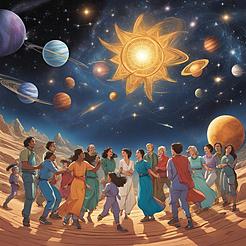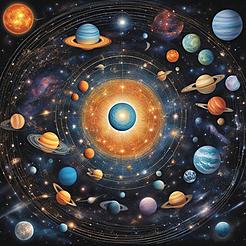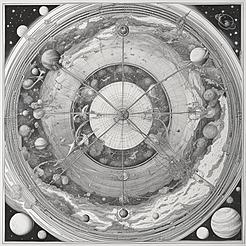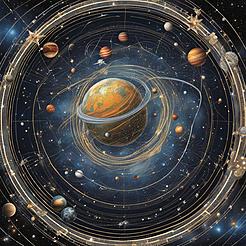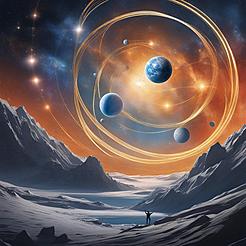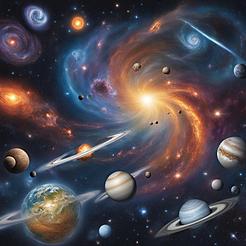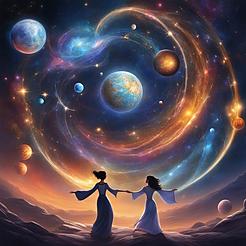 henrydjacob
henrydjacob- Chapter
- 2024-04-15

Beyond the intricate dance of planets and moons, lies a realm of cosmic proportions where galaxies collide, stars are born, and the gravitational forces of the universe shape the very fabric of space and time. Welcome to the chapter 'Galactic Interactions: Beyond the N-Body Problem,' where we embark on a journey to explore the mysteries of galactic dynamics and the celestial choreography that unfolds on a cosmic scale.
As we peer into the depths of the universe, we are greeted by a breathtaking display of galactic interactions that defy our earthly perceptions of space and time. Galaxies, vast collections of stars, gas, and dark matter, populate the cosmic landscape in a mesmerizing array of shapes and sizes, from spiral galaxies with graceful arms to elliptical galaxies with their smooth, round profiles.
One of the most awe-inspiring phenomena in the realm of galactic interactions is the cosmic ballet of galactic collisions. When galaxies come into contact with each other, the gravitational forces at play unleash a spectacular display of cosmic fireworks, triggering star formation, supermassive black hole mergers, and the reshaping of galactic structures. These celestial encounters, spanning millions of years, sculpt the evolution of galaxies and give rise to new cosmic formations that bear witness to the raw power of gravity on a cosmic scale.
In the heart of many galaxies lies a supermassive black hole, an enigmatic cosmic entity whose gravitational pull is so immense that not even light can escape its grasp. These cosmic behemoths, millions or even billions of times more massive than our Sun, play a central role in the dynamics of galaxies, influencing the motion of stars, gas, and even entire galactic structures. When galaxies merge, the gravitational dance of supermassive black holes can lead to violent outbursts of energy, producing powerful jets of radiation that reverberate across the cosmos.
The interplay of dark matter, a mysterious invisible substance that makes up a significant portion of the universe's mass, further complicates the tapestry of galactic interactions. Dark matter, with its gravitational influence, shapes the distribution of galaxies in the cosmic web, weaving a complex network of filaments and voids that span billions of light-years. The gravitational dance between dark matter and luminous matter gives rise to the intricate structures we observe in the universe, from galaxy clusters to vast cosmic voids that stretch across the cosmos.
As we delve deeper into the mysteries of galactic dynamics, we encounter the concept of galactic cannibalism, where larger galaxies devour smaller satellite galaxies in a cosmic feast of stars and gas. This process, driven by gravitational interactions, leads to the growth of massive galaxies and the formation of galactic halos composed of stars torn from their original homes. Galactic cannibalism is a testament to the relentless nature of gravity in shaping the evolution of galaxies and sculpting the cosmic landscape over billions of years.
In the words of renowned astrophysicist Carl Sagan, "The cosmos is within us. We are made of star-stuff." Indeed, as we gaze upon the celestial tapestry of galactic interactions, we are reminded of our cosmic origins and the profound connection between the universe's gravitational forces and the intricate dance of galaxies.
References:
- "Astrophysics for People in a Hurry" by Neil deGrasse Tyson
- "Gravity's Engines: How Bubble-Blowing Black Holes Rule Galaxies, Stars, and Life in the Cosmos" by Caleb Scharf
- "Astrophysics for People in a Hurry" by Neil deGrasse Tyson
- "Gravity's Engines: How Bubble-Blowing Black Holes Rule Galaxies, Stars, and Life in the Cosmos" by Caleb Scharf
